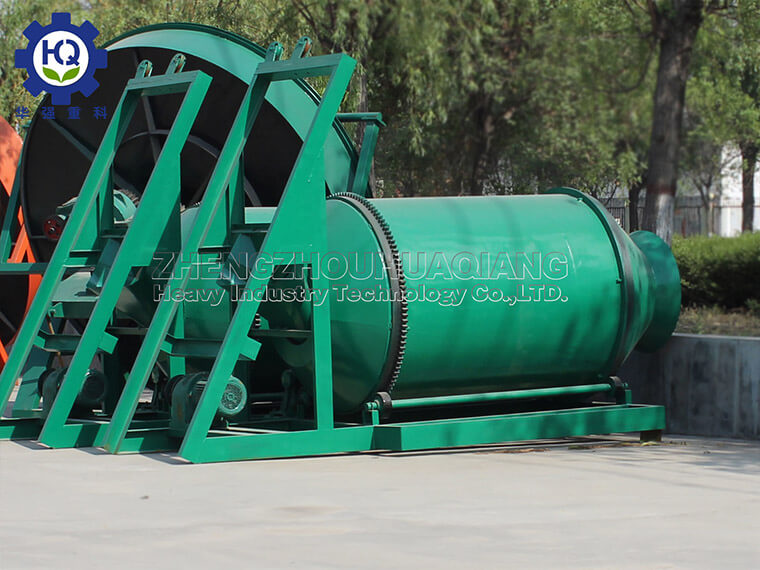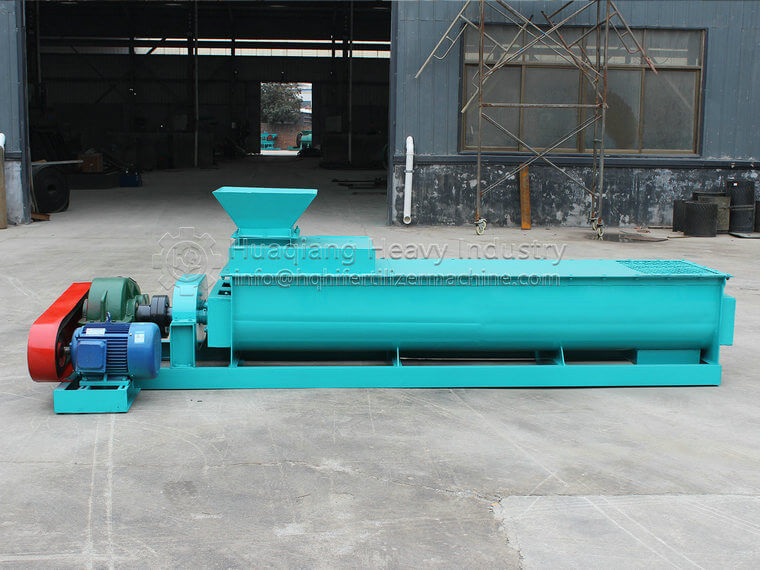Medium sized organic fertilizer production lines have higher requirements in terms of production capacity and product quality, and their equipment combination needs to comprehensively consider multiple factors to achieve efficient and stable production.
During the raw material pretreatment stage, large-scale fermentation organic fertilizer turners play an important role. It has strong power and a large operating range, and can quickly flip and ferment a large amount of organic raw materials. By regularly flipping and throwing, sufficient oxygen is provided to microorganisms to accelerate the fermentation process and ensure even maturation of raw materials.
The raw material crushing process adopts a hammer crusher, which has strong crushing ability and can quickly crush materials of various hardness into fine particles. Paired with a conveyor, the crushed material can be promptly transported to the next process, ensuring the continuity of production.
The mixing process uses a double axis mixer. This type of mixer has strong mixing force and fast mixing speed, which can fully mix various raw materials, including additives, trace elements, etc., in a short period of time, ensuring uniform distribution of fertilizer nutrients and providing high-quality materials for subsequent granulation.
Granulation is the core process, and a roller extrusion granulator is a good choice. It extrudes materials into molds through strong pressure, producing particles with high density and strength, suitable for medium-sized production to meet the requirements of fertilizer quality and yield. Meanwhile, equipped with a cutting device, the particle length can be precisely controlled.
The drying process uses a bundle dryer, which has high heat exchange efficiency and can quickly remove moisture from fertilizer particles. By reasonably controlling the temperature of hot air and the residence time of materials, the drying effect is ensured while avoiding the loss of nutrients.
The cooling process follows closely behind, and the air-cooled cooler can quickly reduce the temperature of fertilizer particles, improve their physical stability, and facilitate subsequent screening and packaging.
The screening equipment adopts multi-layer vibrating screens, which can accurately screen fertilizer particles of different sizes, separate unqualified particles for secondary treatment, and ensure product quality meets standards.
Finally, the automatic packaging machine achieves fast and precise packaging of fertilizers. It can be packaged according to the preset weight, improving packaging efficiency and meeting the production capacity requirements of medium-sized production lines.
The medium-sized organic fertilizer production line has achieved efficient production from raw materials to finished products through the careful combination of these equipment, with stable product quality and good adaptability to market competition.






